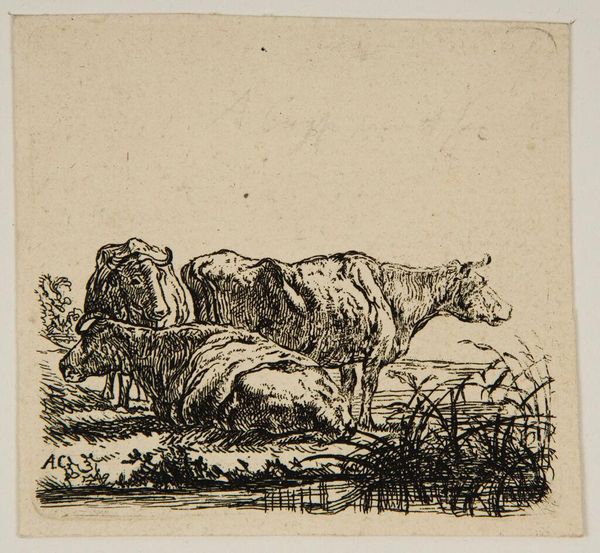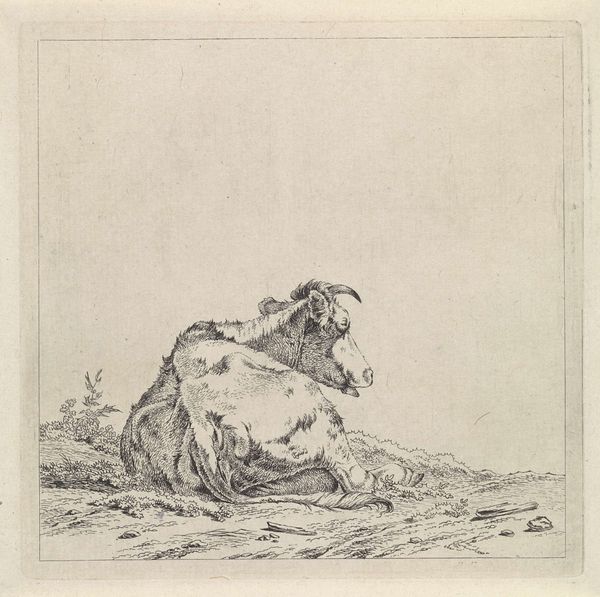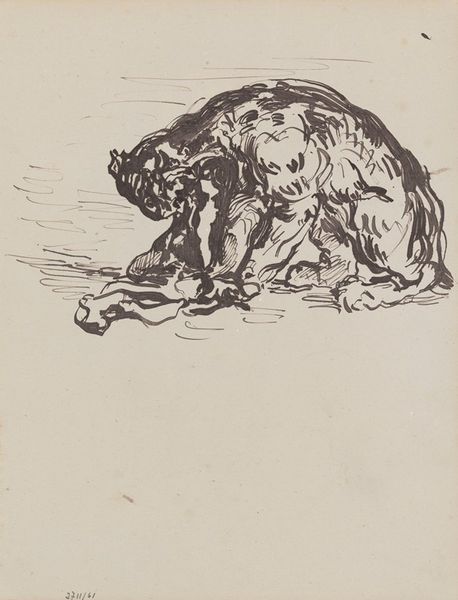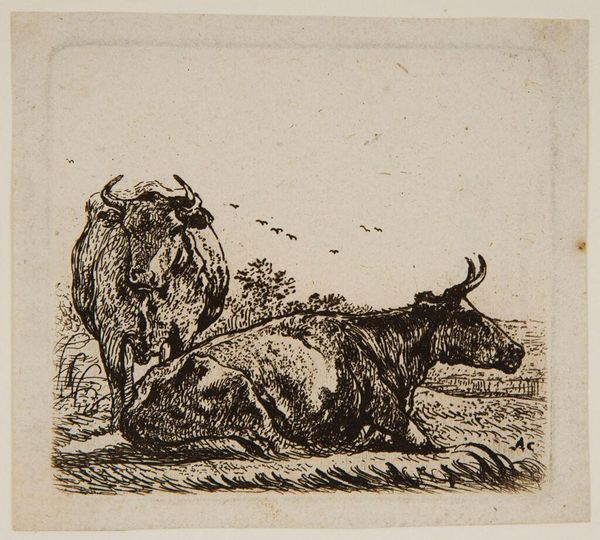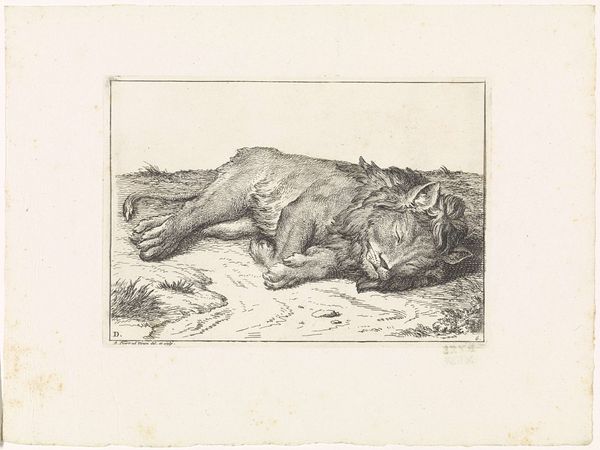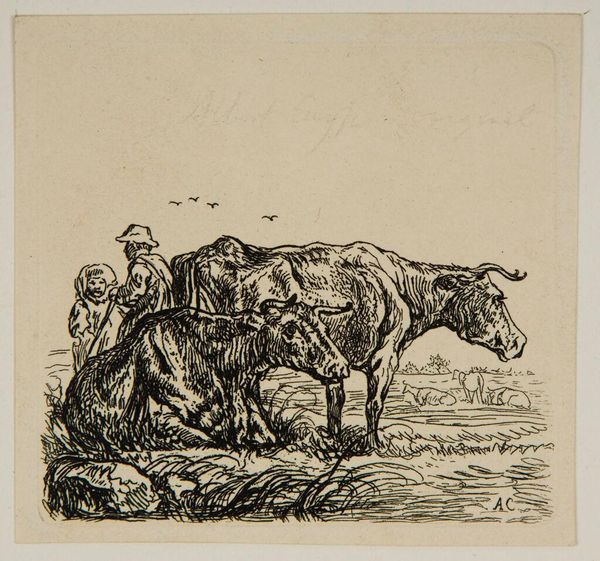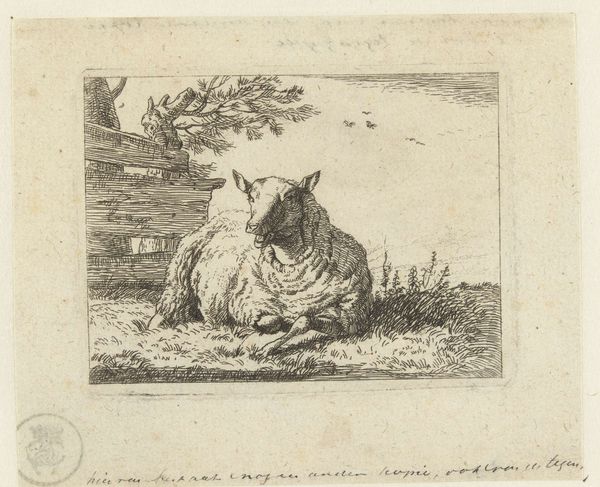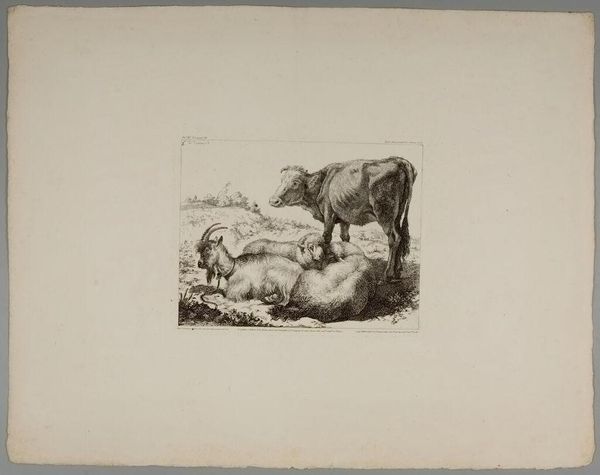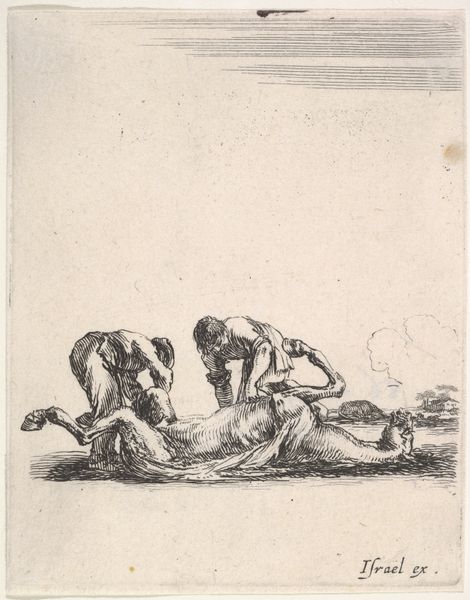
Copyright: CC0 1.0
Curator: This is Aelbert Cuyp’s "Study III", housed here at the Harvard Art Museums. It features two cows rendered in fine lines and what appears to be an etching technique. Editor: The first thing I notice is how restful it feels, almost pastoral. The birds overhead and the reclining cow add to that sense of peace, wouldn’t you say? Curator: Absolutely, and considering Cuyp's focus on landscape painting, especially his depictions of the Dutch countryside and its agrarian practices, this etching might have served as a study for incorporating livestock in a larger composition. Editor: Livestock as symbols of prosperity and domesticity, very much a part of the Dutch Golden Age imagery. The cows, rendered with clear, crisp lines, are powerful symbols of a nation’s wealth. Curator: Precisely, and the method of its making is significant. Cuyp’s choice of etching allowed for the relatively quick reproduction of these studies, making them accessible to a wider audience. Editor: It's incredible how a small work like this can speak volumes about the social and cultural landscape. Curator: Indeed, looking closely at the methods and symbols employed, we gain richer insight into the artwork and the world it came from. Editor: It just shows that even a simple scene can hold layers of meaning if we take the time to look.
Comments
No comments
Be the first to comment and join the conversation on the ultimate creative platform.

